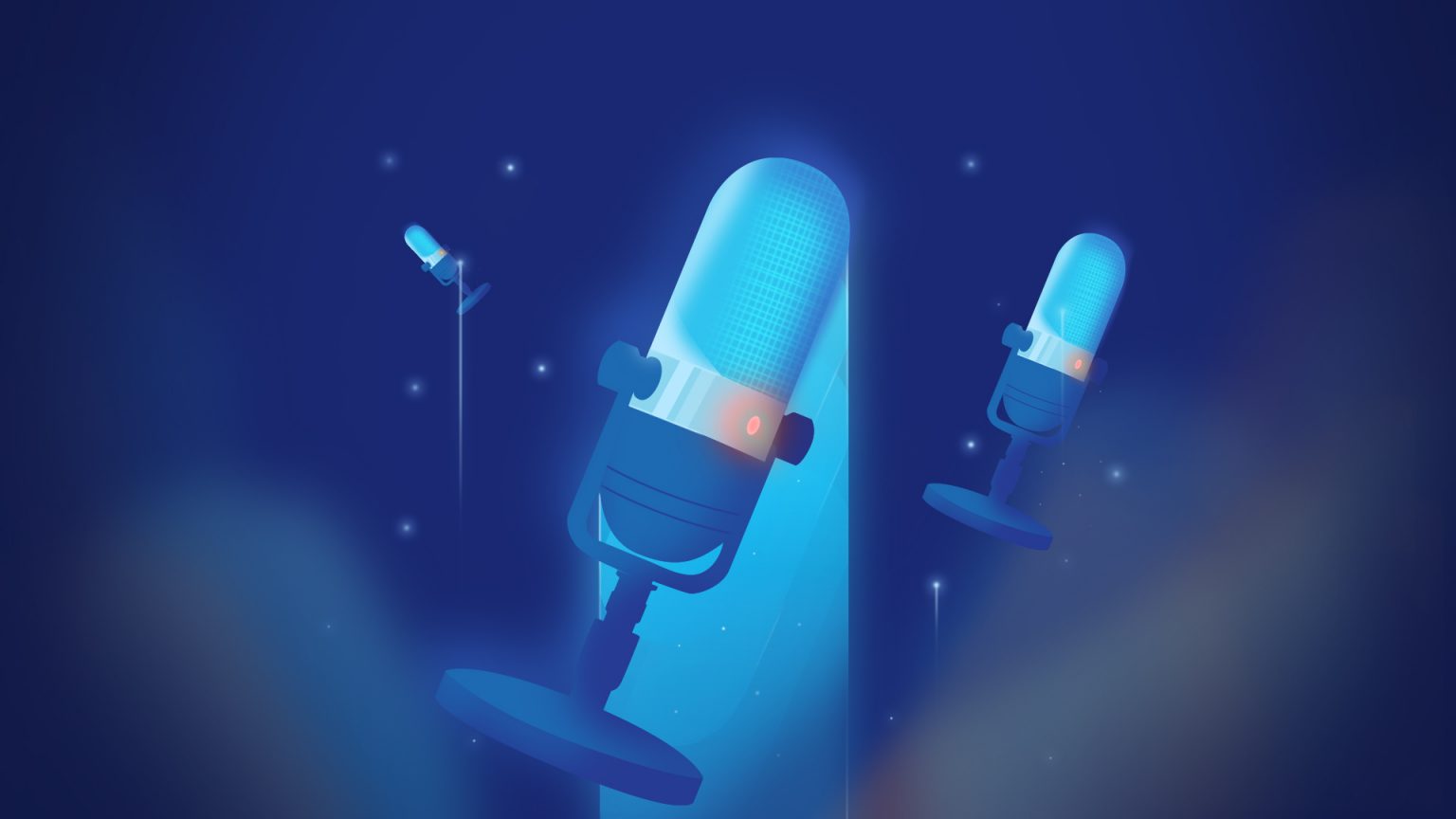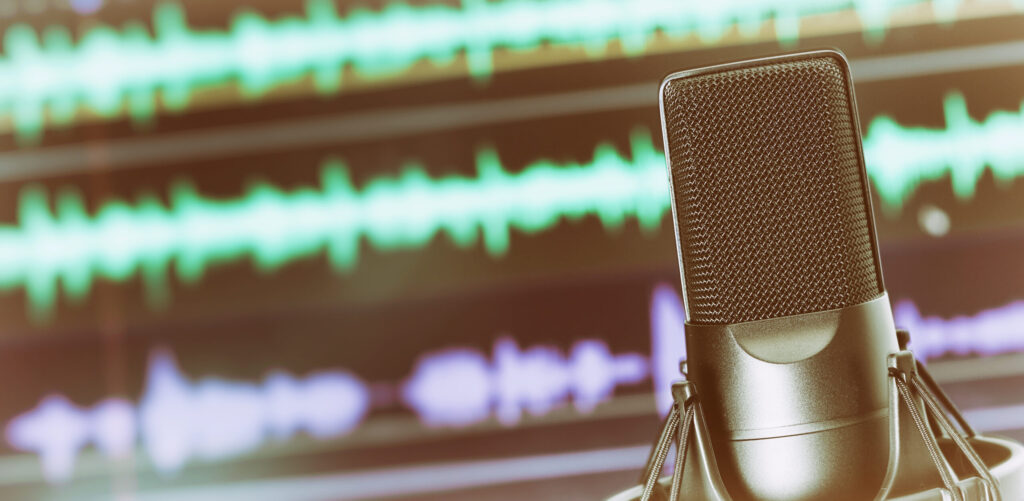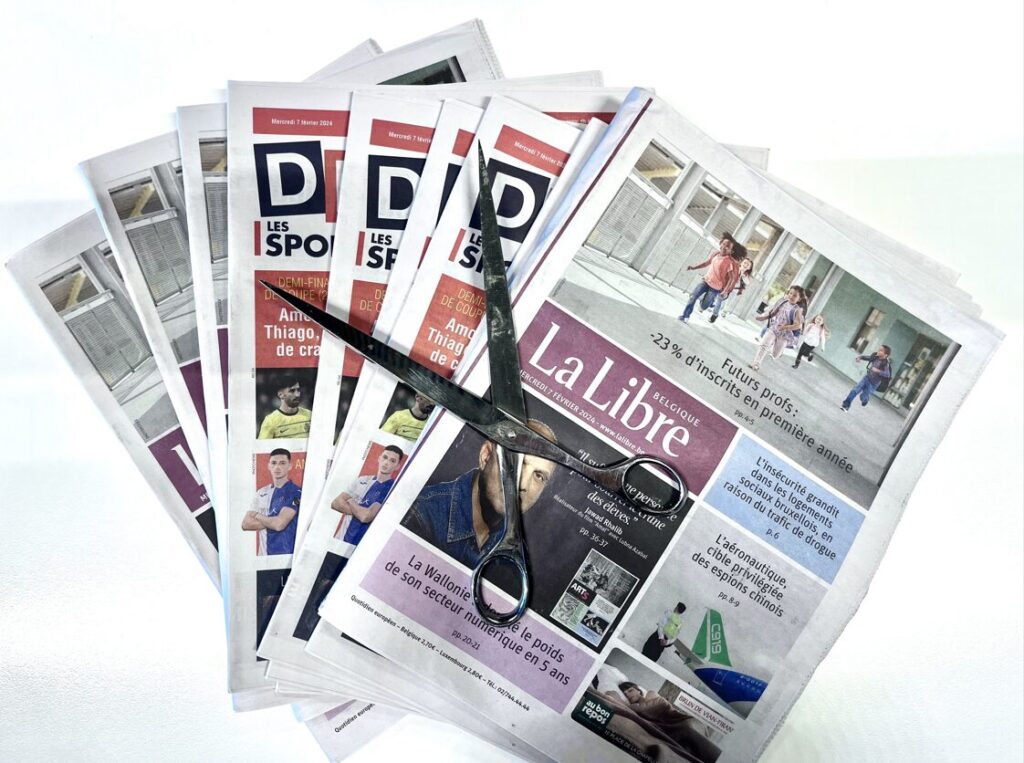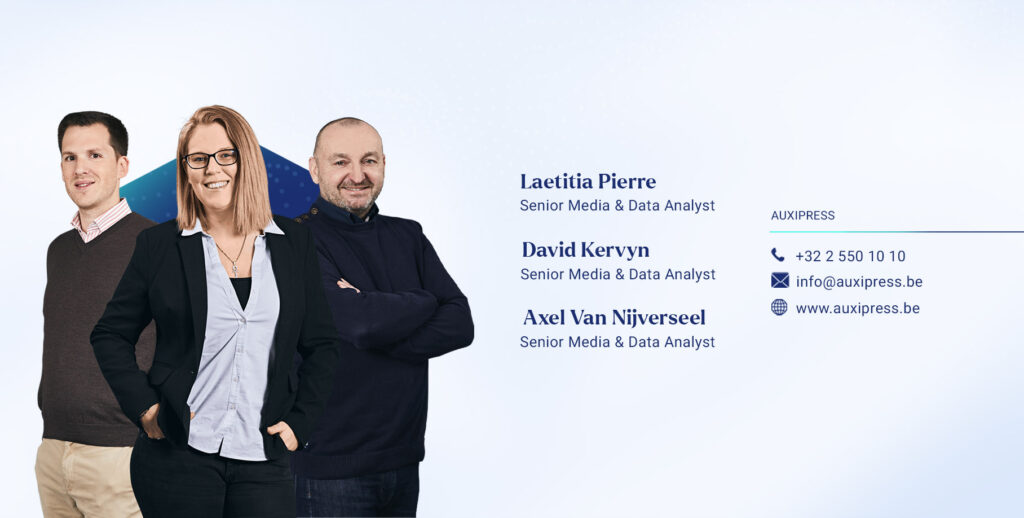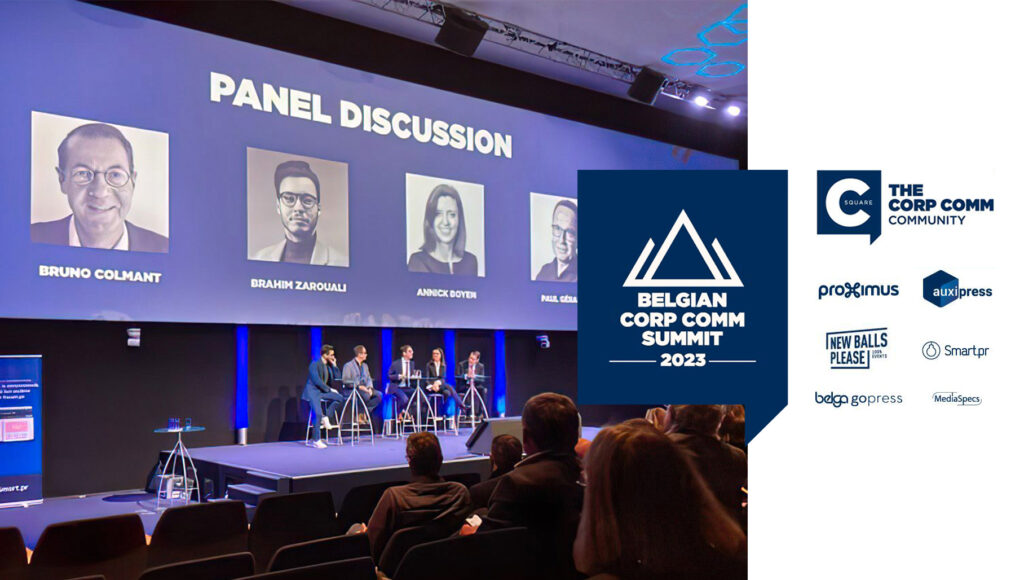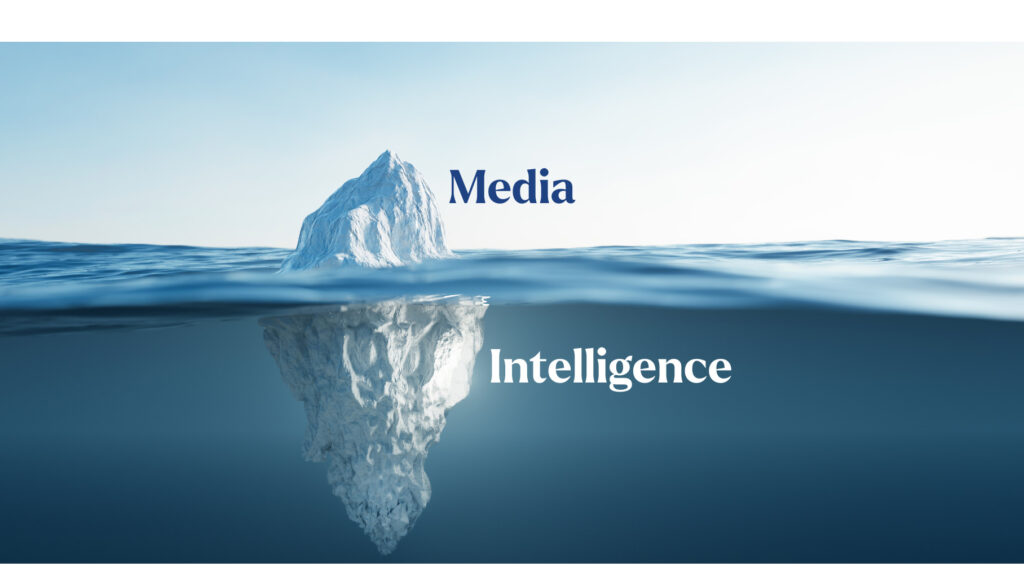The fascinating realm of media is constantly evolving. The year 2020, with all its peculiar events, already caused numerous changes in usage. Fortunately, we have in-house experts to help us analyse emerging trends and decipher Belgians’ changing habits. In this first instalment of a series of articles on Auxipress’ various fields of expertise, let us look into the latest in radio and television.
Radio and television are ingrained in our daily routines. Whether we wake up, have breakfast, drive to work, or watch the evening news. As the Internet emerged and started changing our behaviour, many heralded their downfall. However, both media managed to adapt and evolve. New technologies, the digital leap forward and the recent COVID-19 lockdown have already triggered changes in our daily habits. Our Radio and Television expert at Auxipress, Klaas Van Hove, breaks it down for us.
Mixed content, say what?
A first observation is the mixedness of available content. More and more media mutually enrich each other with different sources to provide the most comprehensive and best illustrated content possible. Online press articles are the best and most frequent example: they are often illustrated with video extracts from TV news broadcasts.
Long live the streaming king
In addition to content being mixed, we also notice that the distribution channels of radio and TV chains are more diverse. Large chains no longer exclusively use the traditional (or linear) channels but also incorporate streaming.
Just as a reminder, VOD, or video on demand, is a distribution service offered by TV groups, Internet access providers and independent platforms. It allows users to order and view the programme of their choice in real time on the Internet (streaming). Most VOD services are accessible on multiple devices: PC, television, smartphone, tablet, game console, etc.
Initially conceived for the redistribution of broadcasts, VOD rapidly became a way to offer more content and reach a wider audience. Most television stations have their VOD platform allowing viewers to watch shows live or on demand: RTBF Auvio, VRT NU, RTL Play, Be TV Go, VooMotion… the range to choose from is quite large.
Thanks to these possibilities, television news shows are no longer limited to the classic 40-minute format and can offer longer formats or simply more content. As a matter of fact, some shows are exclusively offered in streaming, like “Café Sport”, which is only available on VRT NU and Sporza’s YouTube channel.
What about these young, eccentric cord-cutters?
The word cord-cutter was recently coined for consumers who no longer watch linear television through a classic decoder, but solely online via streaming platforms like VRT NU, RTBF Auvio, YouTube and Netflix. In a way, they cut the television network cable, hence the term.
This trend mostly affects the age group between 18-34 years. No less than 15% already opted for on demand, according to the latest Digimeter report. According to the latest Deloitte Global Mobile Consumer Survey, 38% of the Belgian population already pays for an SVOD subscription (subscription-based video on demand or a subscription to a VOD service). In July 2020, 32% of US households no longer pay for cable service. Even if this trend primarily concerns entertainment on television and radio, the phenomenon is bound to become more general. VOD is easy to use and multidevice, and it has only just begun to change our behaviour in video content consumption.

Talking to objects, of course
Apart from the mixed content trend, VOD and cord-cutters, another unstoppable phenomenon is smart speakers. Even though they have not quite broken through yet, these connected devices one can talk to are slowly sneaking into our lives. 22% of American households and 26% in Canada already own such intelligent speakers.
The rise of smart speakers offers new opportunities to brands, but also to radio. In a world of demanding/searching without a screen, audio replaces visual. A good example is found in the Netherlands, where some supermarkets are actively testing this technology. Jumbo customers, for example, can dictate their shopping list to the voice assistant and order via smartphone or smart speaker. 11% of clients use this service.
In Belgium, the VRT’s research department is experimenting and testing new products for listeners via smart speaker. The aim is to understand the future expectations of listeners in audio entertainment and news.
News on demand could be offered, for example. It is already possible to ask a voice assistant on smartphone or on smart speaker to hear the latest news flash. In the future, this technology should allow the setup of user profiles and tailored news bulletins based on the individual’s interests: more sports or less, politics, economic news, etc. In this voice command dimension, it also becomes much easier to listen to the radio or podcasts. These smart speakers are particularly easy to use and access, and they are bound to be widely adopted in the future. One Belgian in four is considering such a purchase soon.
Podnews: news when and where I want it
In line with the voice trend, podcasts are a medium that is starting to be adopted more widely in Belgium. According to the latest IMEC Digimeter, 14% of Flemings listen to at least one podcast per month. This number is rising in Belgium.
Even if it is not exactly new, this audio format is available on the Internet and accessible via any computer, smartphone app or voice assistant. It managed to seduce users under the age of 25, but its ease of use allows it to conquer a larger audience.
The podcast is a format adapted to current lifestyles. It can be consumed on demand and transported, it follows the listener everywhere: in his car, on the street via his/her smartphone and headset, and in the living room through a smart speaker. It allows users to be informed easily and thoroughly on one specific subject.
The same goes for podnews (news in podcast format), which is often a targeted derivative of news bulletins. They allow listeners to be informed wherever, whenever. Most of the large radio stations offer a rerun of their news flashes. This trend is booming, pushed by the growing use of smart speakers. In fact, 40% of all podnews is downloaded onto smart speakers.
Conclusion
As marketeers predicted the year 2020 to be marked by voice commands and streaming, they had no idea how right they were. The COVID-19 crisis and the lockdown that ensued pushed media even more towards digital distribution channels. In an on-demand offer as a radio podcast or streaming video, the combination of conventional and digital distribution reaches a wider audience and one of all ages.
Barriers between different media types like television, radio and the Internet are tumbling down, which is really enriching information. Multimedia content will be a challenge for communication strategists, but also offer a plethora of opportunities to reach a targeted audience.
These new habits of content consumption, new distribution channels and new technologies are opportunities to grab for communicators. We are on the verge of an information revolution, which holds the promise of even more novelties in the coming months.
